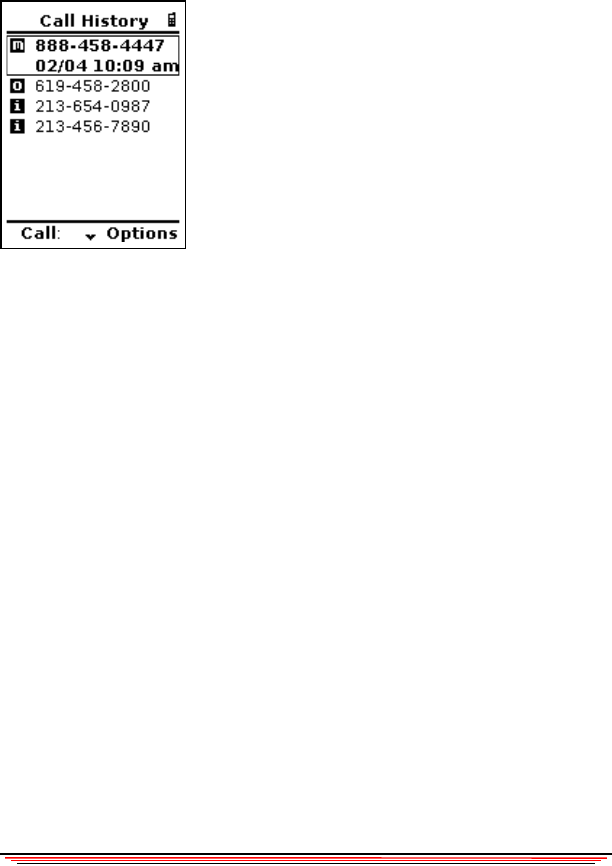User's Guide
Table Of Contents
- About This Manual
- Document Number
- Copyrights and Trademarks
- Getting Technical Support
- FCC & Industry Canada Regulatory Compliance
- Table of Contents
- Preface
- Daily Applications of Your NeoPoint 1600
- Overview of This Manual
- Dual-Mode
- About CDMA...
- Safety
- Did You Know...
- Chapter 1: Getting Started
- Overview
- Battery Installation and Charging
- NeoPoint Phone Description
- Basic NeoPoint Operation
- Chapter 2: NeoPoint Menu Applications
- Overview
- Menu Screen
- Inbox
- Call History
- Contacts
- Schedule
- To Do
- MiniBrowser
- Sync
- Preferences
- More...
- Chapter 3: Syncing Your NeoPoint Phone
- Overview
- Syncing the Phone with Your PC
- Chapter 4: Using Your NeoPoint Phone
- Overview
- Making a Call...
- Answering a Call
- Ending a Call
- Redialing
- Making a Three-Way Call
- Call Waiting
- Disabling Call Waiting
- Using Quick Mode
- Using Inbox
- Using Call History
- Using Contacts
- Using Schedule
- Using To Do
- Using MiniBrowser
- Using Sync
- Using Preferences
- Changing the Ringer Type
- Changing the Volume Levels/Setting Phone to Vibrate Mode
- Key Beep
- Setting the Alerts
- Deleting Your Phone Number from the Main Screen
- Changing the Time Format
- Controlling the Next Event Display from the Main Screen
- Changing Backlight Settings
- Changing the Display Contrast
- Changing Night Light Settings
- Changing the Menu Screen to Display List or Icons
- Setting Security Options
- Enabling/Disabling Active Flip
- Enabling/Disabling Anykey Answer
- Auto Redialing
- Setting Sync to Manual or Automatic
- Enabling/Disabling Screen Save
- Activating/Deactivating Auto Answer
- Wakeup Alarm
- Net Guard
- Prepend
- Changing the Banner
- Using More...
- Chapter 5: NeoPoint Care and Troubleshooting
- Overview
- NeoPoint Care
- Cleaning Instructions
- Basic Troubleshooting Techniques
- Chapter 6: Accessories
- List of NeoPoint Accessories
- Appendix A: Using Your NeoPoint Phone as a Modem
- Overview
- Setting Up Your NeoPoint Modem
- Using Your NeoPoint Phone to Access Dial-up Networking
- Using Your NeoPoint to Receive/Send a Fax
- Using Your NeoPoint to Receive/Send a Data File
- AT Commands
- Appendix B: Using the MiniBrowser
- Overview
- How the MiniBrowser System Works
- Accessing the MiniBrowser
- Web Sites
- Using Bookmarks
- Index

Chapter 2: NeoPoint Menu Applications
NeoPoint 1600 User’s Guide 27
Call History
Call History allows you to view all types of calls at the
touch of a finger. When selected, it displays the last 30
numbers called with a maximum of five calls per number.
These calls are divided into four types of calls:
• incoming
• outgoing
• data
• missed
The type of call is indicated by the letter in front of the
call, e.g., i for incoming, o for outgoing, d for data, and m
for missed.
As you scroll through the list of calls, the number for each call and name of contact
(provided the call was initiated or received from a known contact) is displayed. If the
call was not initiated or received from a known contact, only the telephone number is
displayed. Once you exceed the 30-number storage limit, the oldest call history
record is overwritten.
Pressing Options (Soft Key 2) displays the Options pop-up menu. This menu
includes the following options:
Detail Displays call information, i.e., phone number, date, time, call type:
i, o, d, m, and elapsed time.
Save number Transfers phone number to Contacts. Requests you select number
type: home, work, mobile, other, and then goes to Contacts where you
can enter more information.
Delete Deletes record of the selected number
Delete all Deletes all numbers in Call History
Refer to “Using Call History” on page 57 for information on how to save, delete, or
view detailed call information.










